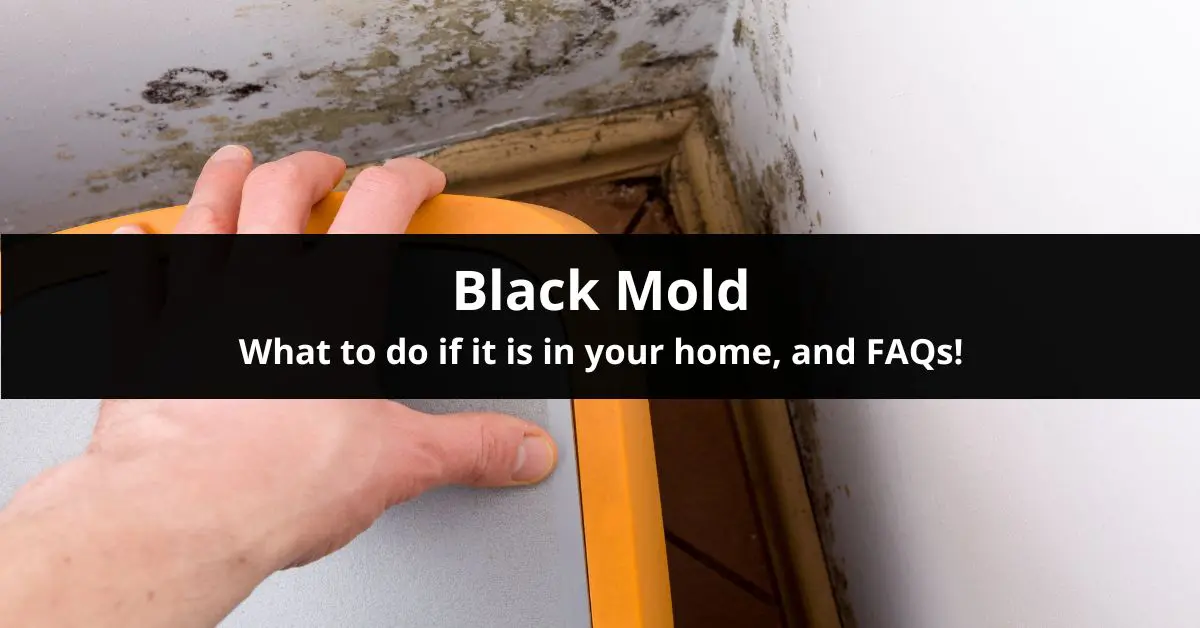Mold is a common household problem that often gets overlooked unlike asbestos and radon. Out of the 1.5 million fungi in the world, about 150,000 are molds. About 20,000 of the species of molds are black molds, so they’re more common than you think. Black mold, also known as Stachybotrys chartarum, is the one that many call “toxic mold,” and this is why it is a concern for homeowners like you.
Unlike an insect infestation, black mold doesn’t discriminate one home from another and can occur in both new and old homes. And just like some infestations, black mold can wreak havoc on your health and compromise the structural integrity of your house. This is why it’s important to remove it as soon as possible.
This guide to black mold will help you learn everything from what it looks like, to the signs in your home that you may have a problem, to how black mold can affect your health. Then you’ll learn the options for testing, removal and prevention. So let’s start with what it looks like, and how to identify if you have a problem.
What Black Mold Looks Like
Black mold is dark in color, although it can be gray, dark green, dark greenish black, or even shades of orange. These colorations are caused by the melanin that it contains. Smaller growths of black mold look slightly furry and are circular in shape, while larger growths look like a black stain stretched along your wall, floor, or ceiling.
Besides being able to visually see mold, there are other signs of black mold you can look for.
Signs of black mold in your home include:
- Musty smells in rooms that have plumbing like bathrooms, kitchens, laundry rooms, and basements
- Water stains on your walls and ceilings
- Condensation on floors, walls, and window sills
- Standing water in your basement
- When touched, it feels slimy (but it is not a good idea to touch black mold which we get into later)
Is Black Mold Dangerous?
Yes, black mold can be considered dangerous because toxic chemicals called mycotoxins are produced in its spores and fungus fragments. While mycotoxins are only considered dangerous if they’re eaten, black mold is still considered a health hazard.
Since mycotoxins are as small as 0.03 microns, they are easily breathed into the respiratory system. This can make existing respiratory problems like allergies, asthma, and COPD worse by causing shortness of breath, wheezing, and coughing.
And, according to the CDC, those who are likely to get serious mold infections in their lungs when exposed include:
- The immune-compromised
- Those receiving treatment for cancer
- Anyone who has had an organ or stem cell transplant
- People taking medicines to suppress their immune system
Even if you don’t have these health issues, if black mold gets into a cut, it can form a large wart or cauliflower-like lesions that swell and leak fluid. This is why it is not a good idea to touch it.
And outside of health concerns, black mold can eat away at your home. This is because black mold feeds on and breaks down organic matter like wood. Once the wood is not strong enough to support your home, you may wind up with collapsed ceilings, caving in floorboards, and walls that need replaced.
If you think you’ve got black mold in your home, it’s time to get those areas tested.
Testing For Black Mold
The first step to test for black mold is to buy a testing kit from your local hardware store or online. Once you perform the test, the air and mold samples need to be sent into the testing facility. Once processed, you’ll get a report letting you know if you have mold and what type.
The other option, and one that is likely better, is to have a professional mold testing company take samples and recommend the next steps to you. A professional will know the best locations to test and be able to answer your questions. Having peace-of-mind when it comes to mold can be worth the cost of the professional. Just make sure you read reviews about the professional before hiring them. King of the Hill did an entire episode on choosing the wrong mold testing company.
To guard against the home and health risks, removing and preventing black mold growth in your home is your best defense.
How To Get Rid Of Black Mold
Cleaning black mold is the first step in removing this fungus that’s among us. Depending on the severity of the black mold infestation, you can clean it yourself or hire a professional.
While hiring a professional is more expensive, you and your family won’t be exposed to the mold while it’s being removed. And a professional will know to look in places you may not have considered to be “black mold hotspots.”
To remove black mold yourself:
- Stop any leaks to remove the black mold’s water source.
- Wear a N95 respirator or mold-spore-rated face mask and cover up all of your exposed skin including your hands.
- Seal the room where the black mold is by shutting the door to the room tightly and covering any vents and doorways with plastic and duct tape.
- Lightly spray the black mold with water to limit how many spores become airborne.
- Throw out any items that can’t be dried quickly if they show signs of mold or water damage.
- Scrub the toxic mold with a brush, rag, or sponge and soapy water and all of the adjacent areas (since not all of the spores are visible).
- Disinfect the areas you just washed with a strong disinfectant like hydrogen peroxide, white vinegar, a professional mold removal product, or bleach.
- Open the area back up and ventilate it as much as possible to get rid of any fumes.
- Place all of the equipment you used and the debris into a heavy duty trash bag.
- If possible, leave the area through an outdoor opening, so you don’t spread black mold spores throughout your home.
Pro-tip: Use a HEPA filter with or on your air conditioner, furnace, or air purifier to catch any mold spores already airborne in your home. This is especially important as you’re cleaning because you may accidentally launch them while you wipe, brush, and spray.
Now that you’ve gotten rid of the black mold, you want to make sure that it doesn’t come back.
Ways to Prevent Black Mold
There are steps you can take within your home to make it less prone to black mold growth.
- Keep the humidity in your house below 50%.
- Maintain a clean, dry, and well-ventilated home.
- Fix all water leaks immediately.
- Install ventilation fans in your kitchen and bathrooms.
- Improve the ventilation in areas that are prone to black mold.
- Make searching your home for toxic mold part of your seasonal cleaning routine.
If you don’t have the budget to remove black mold, or you don’t want to deal with it, you can always sell your house for cash to a real estate investing company like ours. If you sell on the real estate market and buyers discover black mold, you may be stuck with the property for a long time, and you have to pay expensive real estate agent fees. But black mold is treatable and not always a reason to sell. Especially now that you know the causes, risks and ways to remove it.


